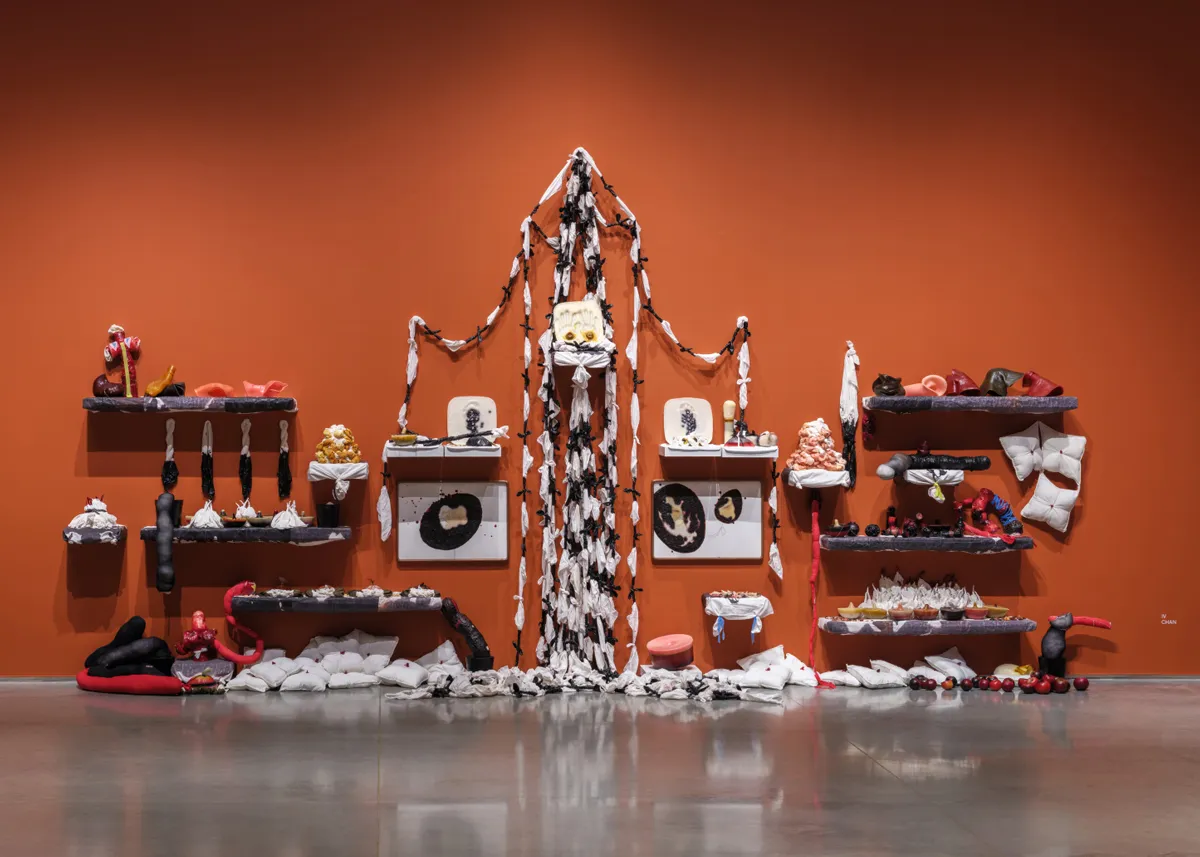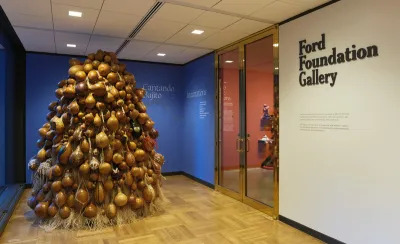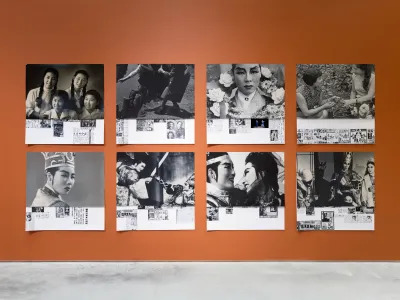
For 605 days, the Nicaraguan activist and historian Dora María Téllez Argüello was incarcerated for her political opposition to the country’s presidency turned dictatorship. While confined to solitary, Téllez Argüello sang to herself in “a low tone” as a form of self-preservation amid the dehumanizing conditions she was subjected to during her imprisonment from June 2021 until her release and exile in February 2023.
The echoes of Téllez Argüello’s resolute voice serve as both metaphor and metronome for the aptly titled year-long, multipart exhibition, “Cantando Bajito” (“singing at a low tone” or “singing softly”) at the Ford Foundation Gallery in New York. Tucked away on the ground floor of the foundation’s prodigious 12-story atrium on East 43rd Street, the gallery puts forth socially engaged shows that reflect the programmatic priorities of the Ford Foundation, a progressive leader in global philanthropy. “Cantando Bajito” comes amid a moment of deep political precarity in the US heightened by a string of violent, retro-regressive Supreme Court decisions that impact the rights of women, people of color, immigrants, and queer people; the exhibition then serves as a salve to this, aiming to lift up femme-centered forms of knowledge.
“Incantations,” the show’s second movement, is curated by Roxana Fabius, Kobe Ko, and Beya Othmani and features eight artists: Amina Agueznay, Seba Calfuqueo, IV Chan, Tamar Ettun, Serene Hui, siren eun young jung, Mônica Ventura, and Osías Yanov. While the show looks back at various political histories, it has a transcendent quality to it, one that celebrates the bodily, spiritual, political, and cultural agency that made such histories and movements possible and whose legacy is felt in the recent works on view here.
Animated by ancestral wisdom, intimacy, resistance, kinship, concealment, and language, the nine-work show offers a conceptual approach to engaging transnational feminism as an anecdote to patriarchal repression. As a whole, “Incantations” presents a world unto itself—from Serene Hui’s exploration of the Chinese-developed women’s only-language, Nushu; to Osías Yanov’s installation, offering a new vantage point into queered sites of intimacy, like nightclub bathrooms, amid Argentina’s military-backed dictatorship; and Amina Agueznay’s reflection on traditional matrimonial rites a part of the Anti-Atlas culture of Morocco. Together these works reflect an internationalist perspective on the process of world-making, or “re-existence,” as the curators put it, where “spaces of violence [turn] into places for building new solidarities, moving beyond resistance to imagine other possible ways of existing.” Together, the monumental works that scale the gallery walls and punctuate its floor serve as an epistemic exploration of resistance in the wake of a steady uptick of gender-based violence.

For curators Fabius, Ko, and Othmani, this context informed their curatorial approach, but rather than simply exhibiting works that literally illustrate this violence, they opted for works that imagine ways to steel against them. In an interview with ARTnews, Fabius said that this meant “not displaying cruelty that’s so ubiquitous, consumed, and desensitizing,” instead they looked for “these aesthetics of vulnerability that, in putting bodies and stories together, generate a space of protection.”
Guarding the entrance to the main gallery is Mônica Ventura’s O Sorriso de Acotirene (2018), a tower made of vegetable gourds, raffia, and steel. The gourd’s multifunctional use as a jug, animate spiritual instrument, and symbol of fertility signifies the confluence of Afro-diasporic, Indigenous, and femme-centered epistemologies that were formed in the Maroon communities of colonial Brazil. Beckoning viewers into the world of “Incantations,” the work’s positioning at the gallery’s threshold gestures toward a reorientation of embodied knowledge required upon entering the space. “Acotirene embodies the feminine strength we find in our mothers, grandmothers, sisters, aunts, teachers, and friends—a steadfast advisor,” Ventura said.

Similarly, Mapuche artist Seba Calfuqueo engages ancestral wisdom and themes of sustainability in her 3D animation, MAPU KUFÜLL (2020). The vivid five-and-a-half-minute video is both a response to and a reminder of the destruction waged upon the Indigenous Machupe lands of Araucanía (in present-day central Chile) during the late 19th century. For centuries, foraging mushrooms has been a sacred act of resistance for the Mapuche people.
“Mushrooms are food sovereignty,” Calfuqeuo told ARTnews. “My people specifically have strong ties with them. … The knowledge of the forest is always a transgenerational relationship.” In MAPU KUFÜLL, a Mapuche person carefully harvests wild mushrooms, guided by the instructions of their grandmother. At the start of this harvest, the young forager, speaking in the Mapuche’s language, Mapudungun, salutes the spirits enmeshed within the natural landscape. They take only what is needed—not more. In contrast to the extractive and dominating strategies of colonialism, Calfuqueo’s work highlights the importance of relying on feminized and Indigenous knowledge as a way of knowing and being that honors the symbiotic relationship between humans and the land, between the realms of the ancestors and the living.

But “Incantations” is not necessarily about women and femmes as bearers of the ultimate truth, rather the exhibition guides viewers toward a politic of transnational feminism where a diversity of perspectives and attunement to cultural nuance can lead to a decolonial framework. “What we’re thinking about is the bigger systemic crisis, and the answer we can give is actually within your community,” Fabius said, adding that in “giving artists resources, we can create the conditions to think—to imagine different worlds.”
In passing through Ventura’s sculptural portal, visitors are invited not only to witness the possibilities of transnational feminism, but to partake in crafting a narrative of resilience and renewal. Fabius added, “We all come with our own backgrounds and experiences, and somewhere in the middle, we meet. That’s what makes it better. Being able to listen to each other, it’s a beautiful place to be.”


